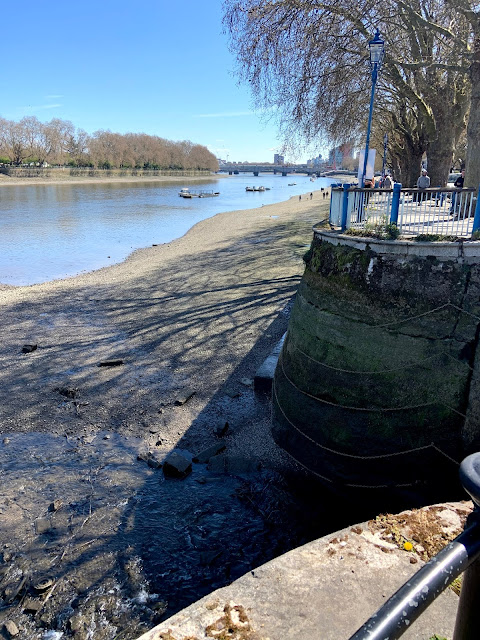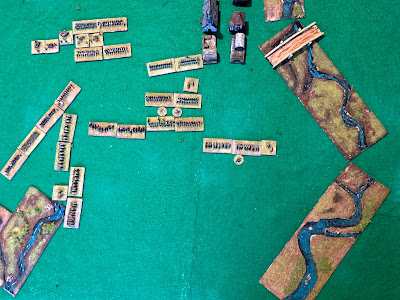So today Postie delivered a book that I ordered from Helion in on of their frequent sales (50% off). The book is Bair Irincheev's Vyborg 1944: The Last Soviet-Finnish Campaign on the Eastern Front. When this first came out I baulked at the £30 cover price, bearing in mind the patchy quality of Helion's publications. At half that I jumped in. I had a quick skim through the book and started reading it this evening.
A couple of immediate observations. There are some excellent photographs, including a number of shots taken by Soviet aerial reconnaissance planes and by bomber crews. The maps are strange. For a start none of them show the city of the book's title. Maybe they make more sense when I get to the relevant part of the text. Secondly, they use unit icons that are quite different to what we're used to in the west, but crucially, there's no key. Finally, none of them have scales. Maybe it's a Soviet thing and the staff couldn't be trusted with all the information. Most odd. Or sloppy. So far the text seems fine and does not suffer from the same translation issues that I mentioned with regard to the Saxon army book. More anon.
Vyborg is the largest city in Karelia and sits on the northern side of the Gulf of Finland, about 10 miles inside the Russian border. Its fate has been that of the classic border city. Once part of the Swedish Baltic empire, Vyborg then passed into the Russian sphere during the Great Northern War. After Sweden lost Finland to the Russians in the war of 1808-09, Vyborg was included within the semi-autonomous Grand Duchy of Finland. From independence in 1917 to the end of the Winter War in 1940 Vyborg was part of the Finnish republic, then it came under Soviet control. For just over a year, as it was recaptured by the Finns in 1941 in the Continuation War. Finally in 1944 Vyborg was re-captured but the Soviets and eventually it ended up in the Russian Federation.
Viipuri by the way is the Finnish name for Vyborg, Vyborg being the old Swedish name. Viipuri is not a transliteration, but is I suppose is the closest to how it notionally sounds to Finnish ears (there being no 'B' or 'G' in the Finnish phonetic system). We did have some confusion in the Schloß several years ago over 'backs', 'bags' and 'packs'. Sellanen ol Viipuri is the usual title given to an old song which I came across on t'internet. I think rendered in formal language it would be 'sellainen on Viipuri' ('such is Vyborg').
The song was written as Ilta Viipurissa* (Sellanen on Viipuri) in 1929 by Eino Kettunen. More specifically Kettunen wrote the lyrics. As I've discovered before with these standards (e.g. Joseph Joseph and Those Were the Days), the tunes are often older. The music was composed by Moravian born Rudolph Josef František Benatzky as Abends in dem kleinen Städtchen. This seems to have been an instrumental judging by the 1924 version on YouTube. No doubt some musicologist or folklorist from Mitteleuropa will (or perhaps already has) claimed even older antecedents for the tune.
* 'Evening in Vyborg'. Kettunen also wrote the lyrics to another Finnish classic which became a meme a decade and a half ago when an electronic version got linked to a Japanese cartoon. Again, the tune is older. Much older I believe. (Ievan Polkka in case you're wondering).
There are many versions of Sellanen Ol Viipuri on YouTube, but my favourite is still this one. I may have mentioned it before, but I'm a sucker for cheese. 😁
https://www.youtube.com/watch?v=Gc_pVBAVzlk
Here are the lyrics so you can sing along. Enjoy!
Siihen aikaan näillä mailla
Oltiin vielä paljon vailla
Eikä kukaan kummempaa kaivannut kai
Tanssittu ei pitkin yötä
Illoin riitti puhdetyötä
Kapaloissaan kehitys köllöttää sai
Toista oli Viipurissa
Karjalaisten kaupungissa
Siellä vanhat vaihtuivatkin uusiin säveliin
Tanssia sai siellä aina
Arkena ja sunnuntaina
Helppo oli tiensä löytää
Kohti oikeata pöytää
Jos vain joku kielsi 'ei ei ei'
Toinen sanoi heti 'hem till mej'
Sellanen ol' Viipuri
Sellanen ol' Viipuri
Karjalaisten kaupunki
Silloin painaneet ei huolet
Ystävät kun kantoi puolet
Surra saivat hevoset, laulut kun soi
Pyöreen tornin hämärässä
Pöydässä niin hilpeässä
Ilo oli irrallaan niin kuin vain voi
Kaikki viihtyi Viipurissa
Karjalaisten kaupungissa
Siellä vanhat vaihtuivatkin uusiin säveliin
Tanssia sai siellä aina
Arkena ja sunnuntaina
Kieli vieras taikka tuttu
Laulu oli helppo juttu
Jos vain joku kielsi 'ei ei ei'
Toinen sanoi heti 'hem till mej'
Sellanen ol' Viipuri
Sellanen ol' Viipuri
Karjalaisten kaupunki
Tieshää Nuutipoja passas
Että syvämes ja vassas
Viipurlaise rakkaus assuuki vain
Torkkelista sai mie muiston
Alla koivu kaunii puiston
Rinkelii ko siult mie kerrankii sain
Muistat sie myös jottai muuta
Taisiha mie saaha suuta
Monrepoos myö kuuta ko nii kahe kasseltii
Laa-laa-la-la-la-la-laa-laa
Laa-laa-la-la-lal-la-laa-laa
Laa-laa-la-la-la-la-laa-laa
Laa-laa-la-la-lal-la-laa-laa
Hmm...
Hmm...
Sellanen ol' Viipuri
Sellanen ol' Viipuri
Karjalaisten kaupunki































